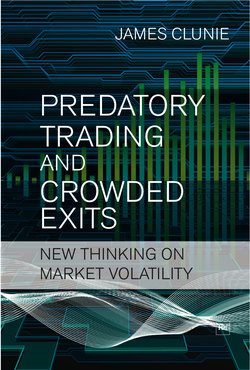Читать книгу Predatory Trading and Crowded Exits - James Clunie - Страница 7
На сайте Литреса книга снята с продажи.
Chapter 1. The Ecology of Markets Fair value
ОглавлениеWhat is the right price for an asset?
A common way of thinking about this problem for a security, such as a stock or a bond, is in terms of its fair value. This is the notion that there is a single value that the security is intrinsically worth at any given time.
A rigorous way in which to think about the intrinsic value of a security is to consider the future cash flows that the security will generate for the owner, and then discount those cash flows back to today’s money. This concept relies on the idea that an expected cash flow at some future date is less valuable than money in hand today, because of the opportunity cost of not having access to the cash today, and the risks associated with future events. Where an investor or trader knows the future cash flows from a security for certain, and knows the rate at which to discount them, calculating the fair value of that security is simple – a few lines of work on a spreadsheet.
But, in practice, things are not so easy.
Consider, for example, a bond issued by a highly credit-worthy government. The cash flows are documented in the bond’s prospectus and are known almost with certainty: each regular coupon payment and the return of principal at maturity of the bond are highly likely to transpire. So far, so simple.
But what is the correct discount rate?
Ambiguity over the appropriate discount rate makes it difficult in practice to estimate the fair value of a security. Analysts develop techniques for coping with this problem – one of the most popular of which is taking the implied discount rate from similar securities, and using this to discount the cash flows from the security in question.
Now consider a riskier security, such as a corporate bond. In this case, the cash flows to the bond’s owner are less certain, as default risk is now higher. Consequently, the intrinsic value of a corporate bond is thus (generally) more difficult to evaluate than for a government bond.
And difficulties do not end with corporate bonds.
Equities offer greater problems – think about the unreliability of cash flows and dividends attributable to shareholders. An extreme example would be, say, a biotechnology company, where cash flows might be zero for the foreseeable future and in the long-run might depend upon success in developing new drugs. Long-term cash flows could be huge…or non-existent!
Uncertainty over both cash flows and the appropriate discount rates leads to great uncertainty over the fair value of a security. Two analysts, each using the same theoretical discounted cash-flow approach, could place very different values on the same security, depending on their cash-flow projections and the discount rates they choose to use. Because of such ambiguity over the true value of a security, some analysts dismiss the notion of a fair value. Instead, they think of securities as having observed market prices and estimated cash flows, and simply use the implied discount rate in the market to compare securities to one another.
